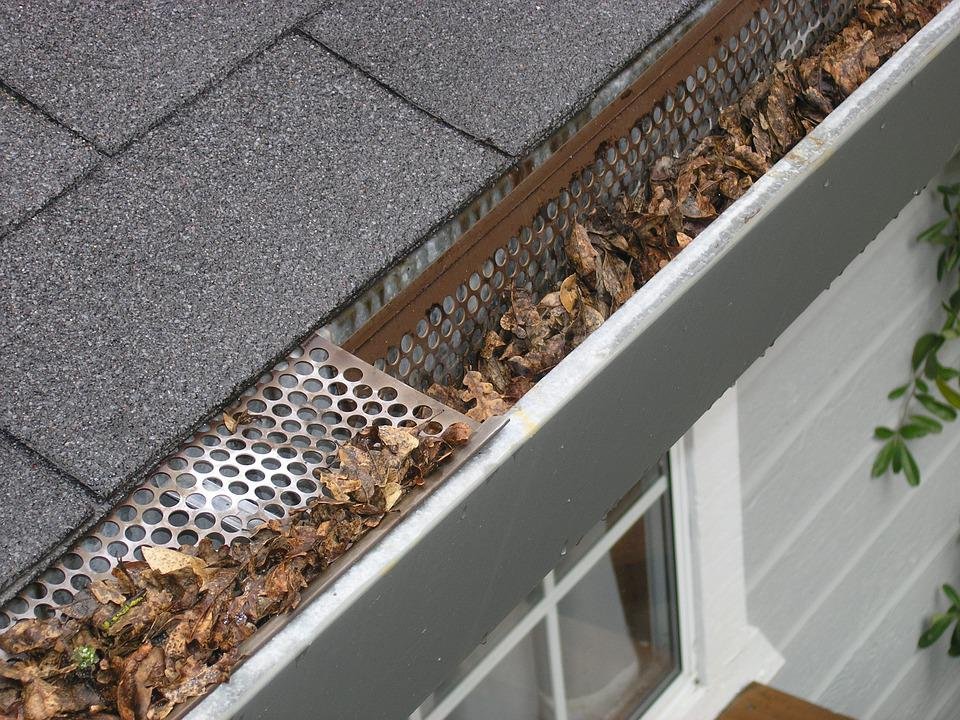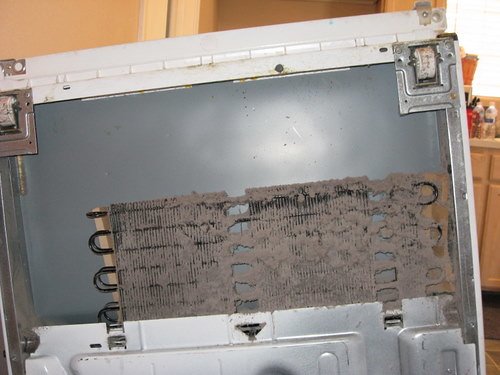From Ovens to Dishwashers, Here's What to Do When Your Appliances Go Haywire
So, let’s assume that your appliance has given up the ghost in catastrophic fashion. What should you do while you wait for the repairman to show up? There are a lot of reasons that your appliances might go out catastrophically, we’ve talked about many of them at one point or another. But the how isn’t as important this week as “what should you do in the meantime?” Your first step should naturally be to call in a professional, but you have to deal with things in between when you call and when they get there to solve the problem.
Oven
Just like with your dryer, your first step is to shut off the oven. Whether that is via the breaker or by turning it off from the display control is dependent on the situation.
If you have a fire extinguisher, go ahead and use it now. A ruined dinner is much better than a ruined house.
Once you've secured your immediate safety, you will definitely want to have a professional look it over. A fire is often a sign of a leaking gas line, sparking internal components, or damaged protective coatings or heating elements. While that is not always the cause it's also better to have a professional tell you that than trying to definitively say on your own and finding out later that you were incorrect.
In the meantime though, you can take the time to air out your kitchen, remove any dishes or food from your oven, but don't try to get to anything that might be stuck in the heating element. If that is where the source of the problem is, your technician of choice is going to want to see that.
Refrigerator and or Freezer
So your refrigerator or freezer decided that they just weren’t going to keep things cold? That’s rough. Sadly, your day is now on a timer, as you have about 8 hours before you start losing the food that’s in there. To avoid having food spoil, here’s a few steps to follow.
Your first step is to prioritize. What has to be kept cold (milk, greens, meats), what can safely warm up (lunch for today? Bread? Fruits? Condiments?) and what you’ll have to throw out (yes you wanted to have those leftovers for lunch tomorrow, but space is at a premium sadly.)
If you have a separate freezer, transfer everything that needs to be kept frozen first.
Next if you have coolers or can get hold of some of those cheap foam ones, that’s an option for the rest of your cold goods.
Make sure that if you go with this route that you also purchase bags of ice to help maintain the temperature.
Once you’ve taken care of your food, you’ve got an important decision to start turning over. What’s your limit for a repair? What point do you consider “not worth it” when it comes to repairing versus purchasing a new refrigerator or freezer? While we will always suggest repairing if possible, we’re practical just like you. Sometimes the cost of repairing is too high, and that is what you need to consider while you wait.
Clothes Washer
All you wanted was to knock out that pile of laundry, and now your laundry room is flooding and it’s seeping into the room beyond. What are your next steps?
Start by making sure that neither you nor your family are anywhere near the water. That needs to be your first step, to ensure no one is stepping into an electrified puddle of water. While that might sound extreme, it’s better to ‘act as if’ when it comes to your safety and proceed forward after that.
Your washer has high-voltage components and getting shocked is not something on anyone’s to-do list.
Now that you know that no one living is in or near the water, time to find out if you can shut it off. See if you can find the plug and see if the water has hit the plug. If not, great! Go through the water, shut it off and unplug it. If yes, go to your breaker and shut off that fuse.
Now that you’re safe, grab whatever is in the washer and remove it to let the water inside dissipate easier and let your repairman get a better look.
Your next step is cleaning up the water. Towels, mops, and wet/dry shop vacs are all options for getting all of them. What matters here is not allowing it to sit.
If it has soaked into your subfloor or you suspect that it has, see if you can pry up a corner of the tile, hardwood, or carpet to inspect things. If it’s sagging or spongey, it’s probably soaked and is going to need replacing, unfortunately. At that point, we’re as clueless as the next person, so we suggest calling a restoration company.
Make sure to clean and disinfect the entire area that was soaked, regardless of the sub-flooring. You don’t want to risk mold growing in this area, which is why getting things dried out is so important.
Clothes Dryer
Now, we did cover this in more depth in last week’s post, so we’ll just hit the high points and point you down to the ‘Additional Reading” section for the link.
If you can get to the plug or the breaker, turn off the dryer as soon as you smell burning or see smoke.
Provided you can see that this is definitely JUST smoke and not flame, try to get a good airflow through the room to get the smoke out of the room, but do NOT open the dryer itself.
Do not approach until the smoke stops coming from the machine or it stops smelling like something is burning.
Don’t start the dryer again. Leave the lint and vent trap alone as that is most likely where things started smoking or burning.
When you can remove your clothes, be careful. They may be signed, and spots like metal buttons could still be hot enough to burn.
Dishwasher
Having your dishwasher flood is similar but not quite the same as having your washer flood and so the steps for it will be also similar but not the same.
Again, start by making sure that you, your family, and your pets are not in contact with the water.
If possible unplug from your kitchen, if not possible go to your breaker and flip the switch for your dishwasher from there.
Carefully remove all of your dishes from the dish rack and place them into your sink. We can figure out washing or drying as needed once the mess is handled.
Check the bottom where the dishwasher normally drains to see if there's anything blocking the drain. We advise wearing gloves for this part both because slimy food is gross and because you don't know what could be causing the blockage.
While you wait to see if the water starts draining again go back up and reread our section regarding the clothes washer about damage to your subfloor, disinfecting and cleaning up the mess.
Is there anything that we missed? Either steps that you were requested to take or other tips you had suggested? Let us know on our Facebook page as always we enjoy hearing from you.
As always, if you so choose, appliance rescue service is here for you. We service homes just like yours from addison, to mckinney, from Frisco to Carrollton,. And our top goal is and always will be getting your home running smoothly so that you can get back to doing what you do best.
You can reach out to us by giving us a call at ((214) 599-0055) or by going to our website. We will work with you to set up an appointment that fits your schedule.
Additional Reading
37 Reasons To Have Your Appliances Maintained Regularly
How an Appliance Repair Call Works














